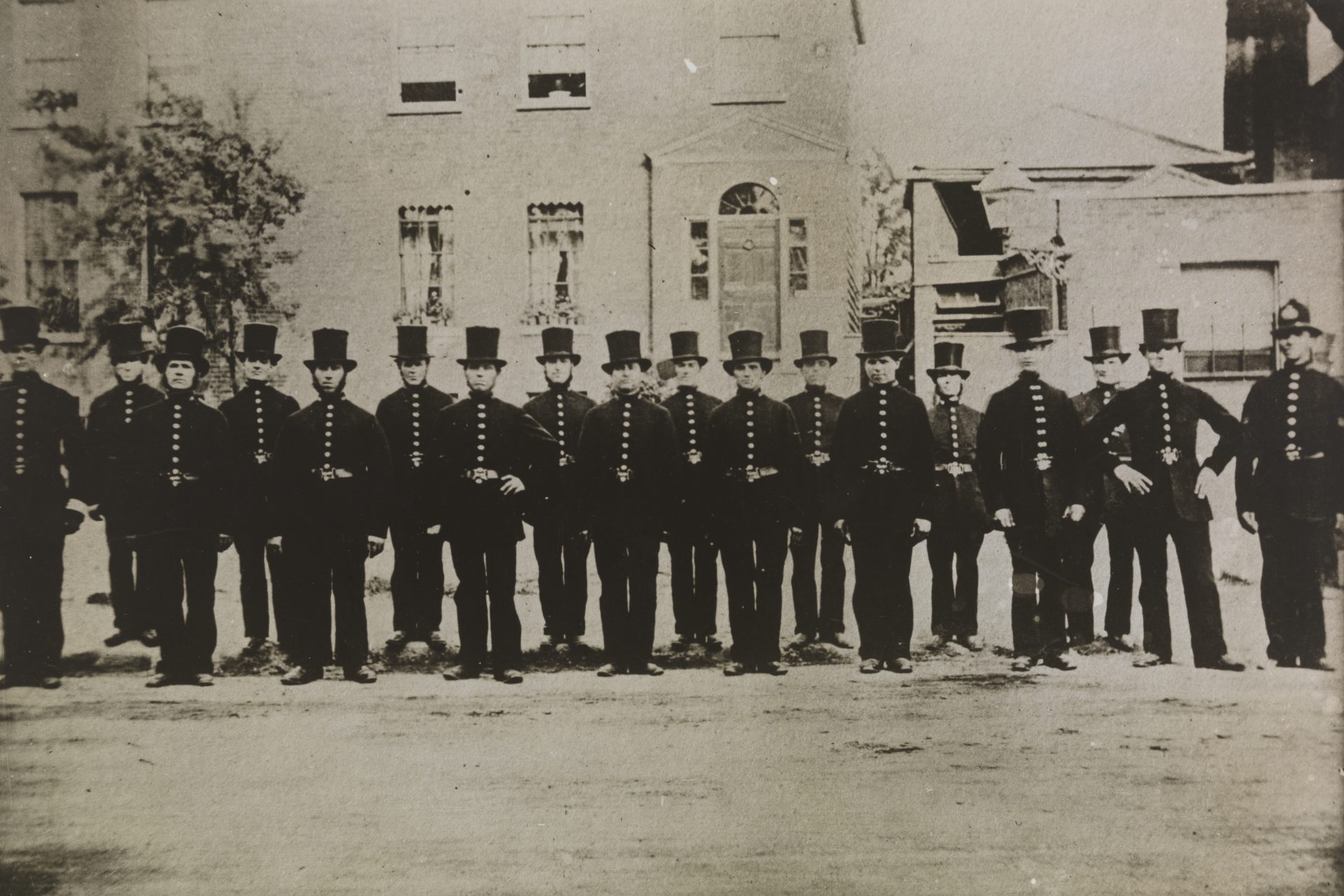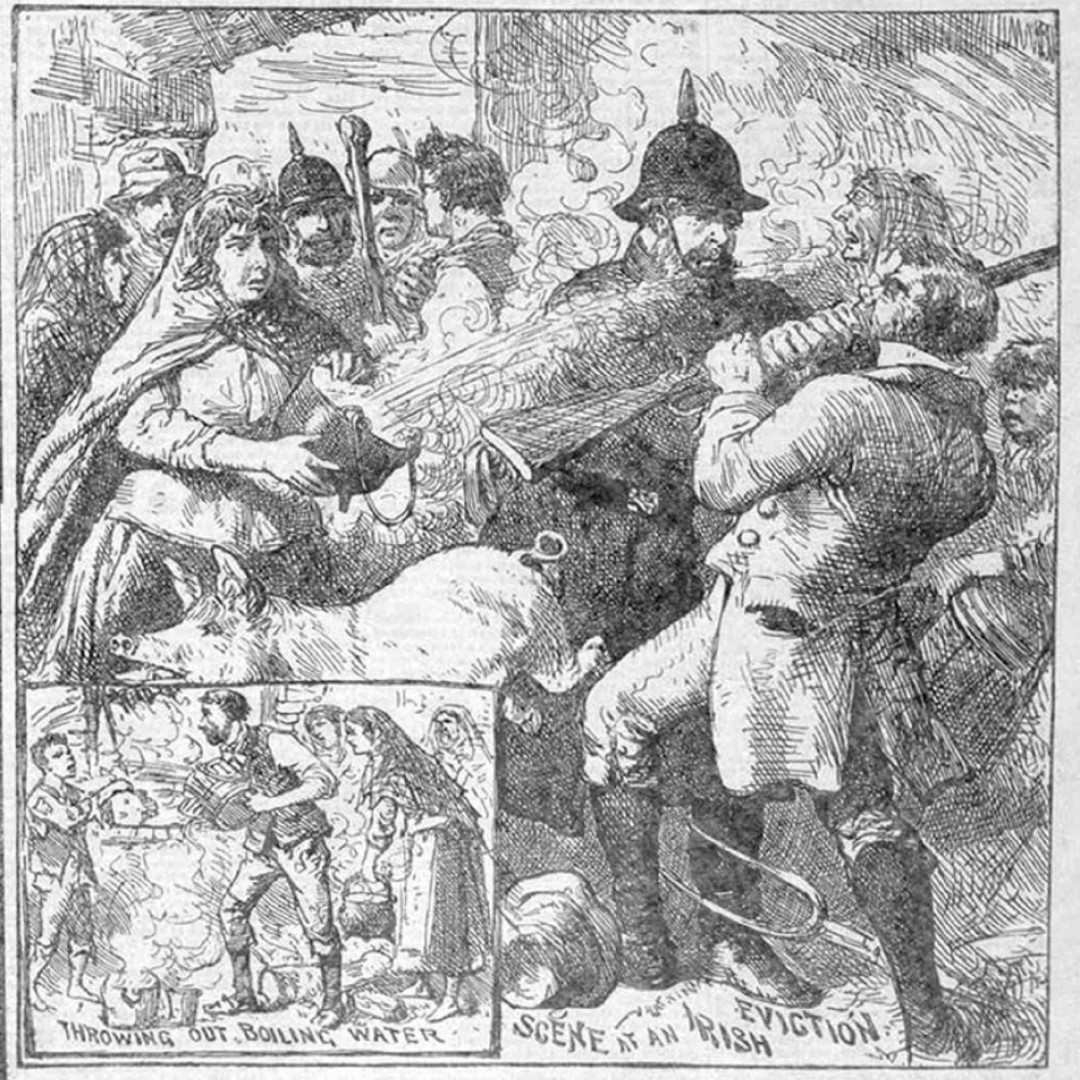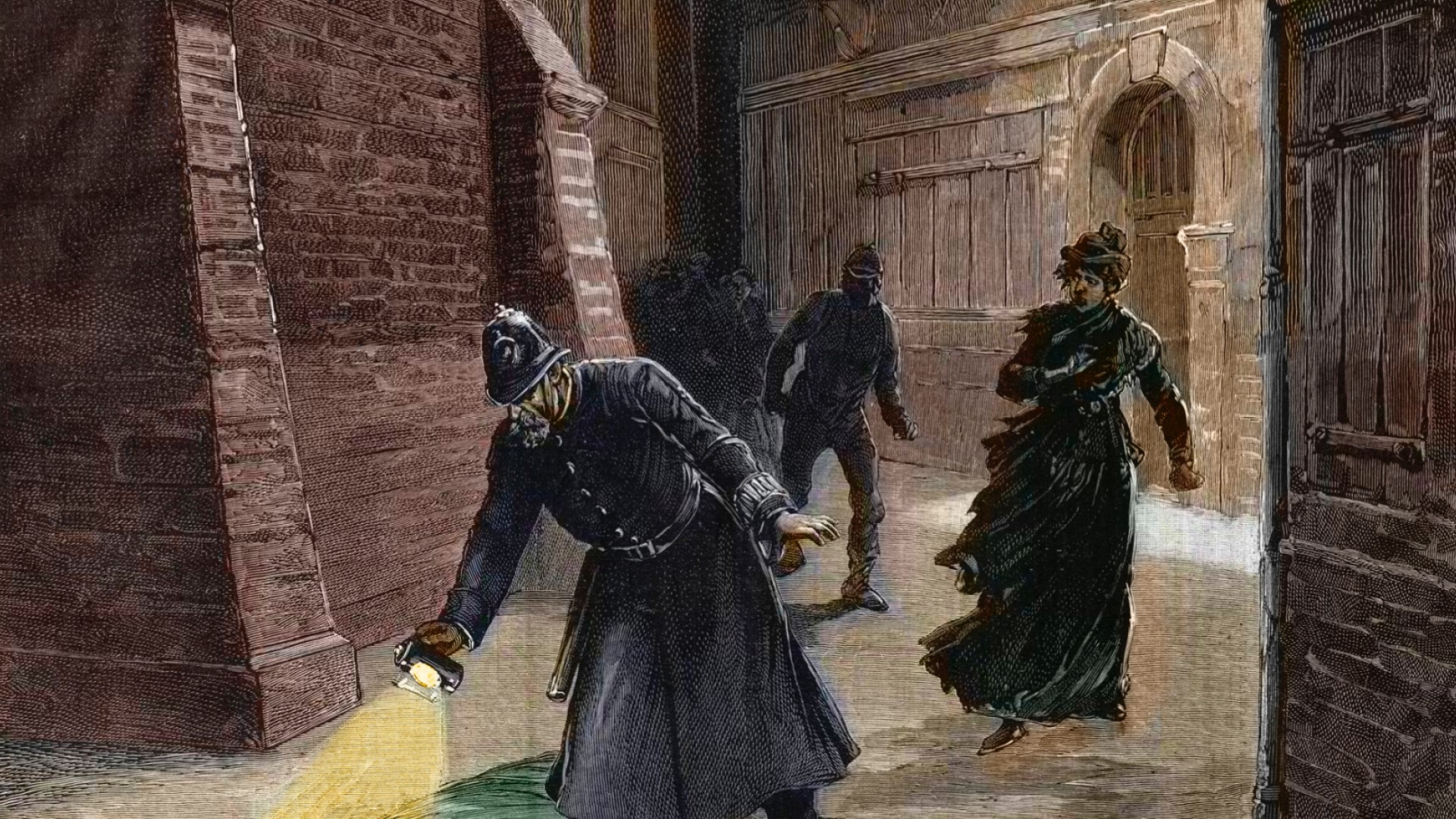Who was Jack the Ripper? The main suspects over the years
The gruesome assassin has been depicted in films and series, but this character is more than just a movie bogeyman. Here is a look at the real-life horror of Jack the Ripper: What did he do? Who were the police suspects? What is his true identity? Where did he go? We answer your questions.
In the autumn of 1888, a mysterious serial killer terrorised the poor area of Whitechapel in the east end of London. To this day, the identity of the killer is unknown.
Between August and November of 1888 five brutal murders occurred. They had such similarities that police were convinced it was the work of the same person.
The victims were all women who had fallen on hard times and relied on lodging houses as shelter. They were women who occasionally had to turn to sell their bodies to pay for food and board.
A letter sent to the London News Agency believed to be sent by the killer was signed "Jack the Ripper." After the police made the letter public, the name caught on instantly and helped turn the gruesome East End murders into an international phenomenon.
By February 1891, a total of 11 victims had been murdered in the area. In fact, it could have been more. They had also been killed in pretty gruesome - yet almost ‘qualified’ ways.
One of the most gruesome attacks occurred on the 7th of August 1888. The body of Martha Tabram was found in George Yard, off Whitechapel High Street. She had been subjected to a vicious and violent attack in which she had suffered 39 frenzied stab wounds to her throat, chest, and abdomen, similar to the later victims.
Many suspects have been considered over the years. Numerous people believe it to be someone within the medical profession due to the brutality and gruesomeness of the murders. Others believe this could have been done by a butcher or hunter.
At Annie Chapman's inquest, Dr. George Bagster Philips - the Divisional Police Surgeon - gave his opinion that Annie Chapman had been murdered so that her killer could obtain her womb. Dr. Philips also claimed that the skill and speed that was shown in removing this organ seriously suggested that the murderer possessed some anatomical knowledge.
Like everything involving this case it is pure speculation, but some people believe the murders stopped because the police caught the killer. Others believe the killer died or took their own life. It could also be that family members had discovered the awful truth had the killer committed to a mental institution before the authorities discovered the true identity. Until we know the murderer, we won’t know what happened to them.
There are many reasons why the Jack the Ripper story is so fascinating. It’s true that he wasn’t the world's first serial killer but he was probably the first recorded in a large metropolis. In addition, it was a time when many of the general public had become literate. And nothing sells papers like a sensational story.
Another reason this story is so fascinating to many is that all the suspects, in one way or another, have to really be discarded. It is staggering to hear that over 2,000 interviews were carried out by Victorian police officers. On top of that, more than 300 people were actually investigated and a whopping 80 people were detained in police custody. It is possible that Jack the Ripper was even one of those who were interviewed or detained, but the truth never came out. So who were the suspects?
'Criminal Lunatic' number X32007 was a troubled soul. He had a tough childhood and, when older, couldn’t manage to hold down a job; actually pushing his employer down the stairs on one occasion. He was a suspect as he would isolate himself to read medical books, but also had caught a venereal disease from a prostitute, according to an article by The Sun. The ‘resulting delusions’ were said to be the catalyst that led him to kill.
Even the Assistant Commissioner of crime at the London Met Police, Melville Macnaghten admitted that Cutbush had "...apparently contracted syphilis about 1888 and since at that time he led an idle and useless life. His brain seems to have become affected, and he believed that people were trying to poison him."
The photo shows Mitre Square circa 1928. It was here that prostitute Catherine Eddowes was murdered by serial killer Jack the Ripper, on 30th September 1888.
Catbush was admitted to an institution and it was there that the tale was proved false. The admission documents and all asylum records do not mention the patient had any venereal disease. They also named his failing mental health as hereditary. Still, however, the fact that Catbush was a relative of a Scotland Yard Chief, made people question whether he really was the perpetrator and if the police had actually covered it up. The conspiracy has many followers but nothing has ever been proven.
The Polish barber’s name came into circulation thanks to original notes recovered by Chief Inspector Donald Swanson’s great-grandson that clearly named him as the killer. Swanson was the officer in charge of the original investigation.
A copy of 'The Lighter Side Of My Life,' as seen in the photo, was displayed at the Crime Museum at New Scotland Yard. On the final page of the book were the original notes made by Chief Inspector Swanson: including the sentence "Kosminski was the suspect”. On 19th April 1894, Kosminski was sent to Leavesden Asylum, where he never left and he spent the remaining twenty-five years of his life. He died, still incarcerated, on the 24th of March, 1919.
Could he have done it as he disappeared and the killings stopped? The records from the asylum clearly suggest that he was not a danger to others and his only outburst of violence was when he threw a chair at an attendant in frustration.
According to Melville Macnaghten's memoranda, Michael Ostrog was "...a Russian doctor and a convict who was subsequently detained in a lunatic asylum as a homicidal maniac. This man's antecedents were of the worst possible type, and his whereabouts at the time of the murders could never be ascertained."
Ostrog was given a harsh sentence for a petty non-related crime and then never turned up to report to the police. This dubbed him a ‘dangerous man’ and his name and description were published in the Police Gazette.
Although he fit the profile and was - indeed - a doctor, Ostrog was given a two-year prison sentence and held in the ‘lunatic wing’ of a French prison. He was released in 1890 - his time inside covered most of the period that the murders took place.
The barrister was well-studied. He was middle class, enjoyed cricket, and was the son of a surgeon. There wasn’t much to suspect him of - until he died.
Timing is everything and the murders came to a cease just as Cruitt ended his life - drowning 'while in an unsound state.' His death would explain why the killings stopped. Worse still, Druitt’s own family believed he was Jack the Ripper, with his cousin writing a pamphlet called 'The East End Murderer – I knew him.'
Of course, the only thing the police had against him was circumstance. Many believe they tried to pin the death on Druitt to name a suspect (the man was dead, so he couldn’t protest) and close the case. Another theory is that Druitt was used as a scapegoat for the alliance between the British Royal family and Freemasonry who had really committed the crimes. This conspiracy was based on ‘no evidence whatsoever’ according to a 1987 article in The Times.
The doctor regarded himself as a highly skilled physician but was known by many as a ‘quack’ - a practicer of health fraud. And a suspect in the Ripper crimes. He was said to be in a boarding house in Whitechapel at the time and he had a history of petty crimes and selling pornography.
Photo: Wikimedia Commons
Detective Chief Inspector Littlechild had written at the time "…amongst the suspects, and to my mind a very likely one was a Dr T [who] was an American quack named Tumblety."
Littlechild claimed Tumblety ended his life and added, "certain it is that from that time the ‘Ripper’ murders came to an end." However, other records now show the man had not ended his life and was, in fact, alive and well in New York.
A Liverpool cotton merchant, no one suspected him as the killer until 1992. Yes, he had a troubled home life with his brother a serial killer on the loose, and his wife finding comfort elsewhere, but no one related him to the name Jack the Ripper until all those years later.
It was only in 1992 that James Maybrick became a suspect. A diary was uncovered that was written by Maybrick self confessing his crimes and identity as Jack the Ripper. Yet, on close scrutiny of the diary that many of the descriptions of the crimes and the crime scenes are actually taken from press reports and later accounts of the Jack the Ripper murders.
Because of this, the journal replicates some of the widespread inaccuracies and errors with regard to the Jack the Ripper Murders. So, after many studies of the diary, the general consensus is that it is, in fact, a forgery.
Photo: The broken grave of Jack The Ripper suspect James Maybrick at Anfield Cemetery
Author Patricia Cornwell, not lacking in ideas, creativity, or funds, made her own studies into the Jack the Ripper case. In her 2002 book ‘Portrait of a Killer - Jack the Ripper Case Closed’, she named him the murderer.
Photo: Wikimedia Commons / public domain
Cornwell funded DNA tests on stamps that she believed Sickert had licked and matched them with the DNA found on the Ripper letters. It is a strong link, putting the man as a very likely suspect.
Sickert, although reportedly fascinated by murder with DNA that matches a letter, may still not have been the man who did it. There still isn’t definitive proof - not to mention he may not have even been in the country at the time as his family says he was holidaying in France.
Of course, Sickert’s DNA was only linked to one of Ripper’s letters. With a DNA test that, technically could have given thousands of likely matches. But there may be more to this one, the lonely letter writer. Many specialists have decided that the variation of grammar, handwriting, and spelling in each of the letters makes it clear no single author could have created them alone. Not to mention two of the deaths took place 12 minutes apart.
This is a serious case of ‘wrong place wrong time’ - or is it? Cross was a local who found Mary Nichols. Well, that at least ties him to one murder scene. Then, over a number of reports, it is said he was also seen at the other locations where these women were found mutilated and murdered.
Photo: 29 Hanbury Street the murder scene of Jack's second victim.
There is a strong case against him. "All the subsequent murders took place between his home in Doveton Street, in Bethnal Green, and place of work in Broad Street at times when he would have been walking to work," the Daily Telegraph wrote in 2012.
Photo from 'The Lodger'
David McNab, the producer of the Channel Five television documentary that examined the evidence against Charles Cross was quoted in the Daily Express as saying “The man who committed these crimes would have been a local. He would have been able to blend into the background and walk the streets without being detected.” He went on to say it was bizarre that no one considered it an important fact that it was Cross who was standing over the body and was convinced Cross was the killer.
The photo shows a map of Whitechapel.
Jack the Ripper expert, Edward Stow, was quoted as saying, "The police at the time were looking for some sort of special individual. But most crimes turn out to be someone quite ordinary. He [Cross] walked past every single murder scene on his way to work. He is the best suspect so far." Could it all have been that simple? Was Jack the Ripper just a normal ‘nobody’? His true identity may be unknown but his grotesque actions have put his name in the history books forever.

















































